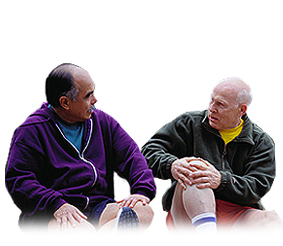Knee Pain SmartSiteTM | ||||||||||||||||||
Smoking and knee surgeryDescriptionMany smokers depend on the stimulating effects of nicotine. These can include boosting your mood, improving short-term memory and concentration, and producing a sense of well-being. However, by quitting tobacco before your surgery, you are more likely to have a successful surgery and recovery. Most smokers in the United States would like to quit smoking. Most people who have quit smoking have made at least one unsuccessful quit attempt in the past. Try to view past attempts to quit as learning experiences, not failures. Smoking and knee replacement surgeryAfter knee replacement surgery, there is an increased chance of blood clots forming in the legs. These clots may travel to the lungs. Smoking increases the risk of blood clots forming. When you smoke, less oxygen reaches the cells in your surgical wound. As a result, your wound may heal slowly and may even become infected. All smokers are at risk for heart and lung problems. Even when your knee replacement surgery goes smoothly, it places more demand on your body, heart, and lungs. Surgery and anesthesia may cause congestion in the lungs (atelectasis). The risk of lung congestion is greatly increased in smokers. There are many reasons to quit using tobaccoWhen used for a long time, tobacco and chemicals such as tar and nicotine can increase your risk of many health problems:
Some smokers will switch to smokeless tobacco instead of quitting tobacco completely. However, there are other risks with smokeless tobacco:
Making the decision to quitMost doctors want you to stop cigarettes and tobacco at least 4 weeks before your knee replacement. Do not be discouraged, even if you have smoked for a long time. Quitting smoking 10 weeks or more before surgery can lower your risk of problems even more. Quitting tobacco is not easy. It can be even harder if you are trying to do it on your own. There are many ways to quit smoking and many resources to help you.
| ||||||||||||||||||
| ||||||||||||||||||
Review Date: 8/9/2018 Reviewed By: C. Benjamin Ma, MD, Professor, Chief, Sports Medicine and Shoulder Service, UCSF Department of Orthopaedic Surgery, San Francisco, CA. Also reviewed by David Zieve, MD, MHA, Medical Director, Brenda Conaway, Editorial Director, and the A.D.A.M. Editorial team. View References:  The information provided herein should not be used during any medical emergency or for the diagnosis or treatment of any medical condition. A licensed medical professional should be consulted for diagnosis and treatment of any and all medical conditions. Links to other sites are provided for information only -- they do not constitute endorsements of those other sites. No warranty of any kind, either expressed or implied, is made as to the accuracy, reliability, timeliness, or correctness of any translations made by a third-party service of the information provided herein into any other language. © 1997- A.D.A.M., a business unit of Ebix, Inc. Any duplication or distribution of the information contained herein is strictly prohibited. | ||||||||||||||||||
A.D.A.M. content is best viewed in IE9 or above, Firefox and Google Chrome browser. | ||||||||||||||||||












